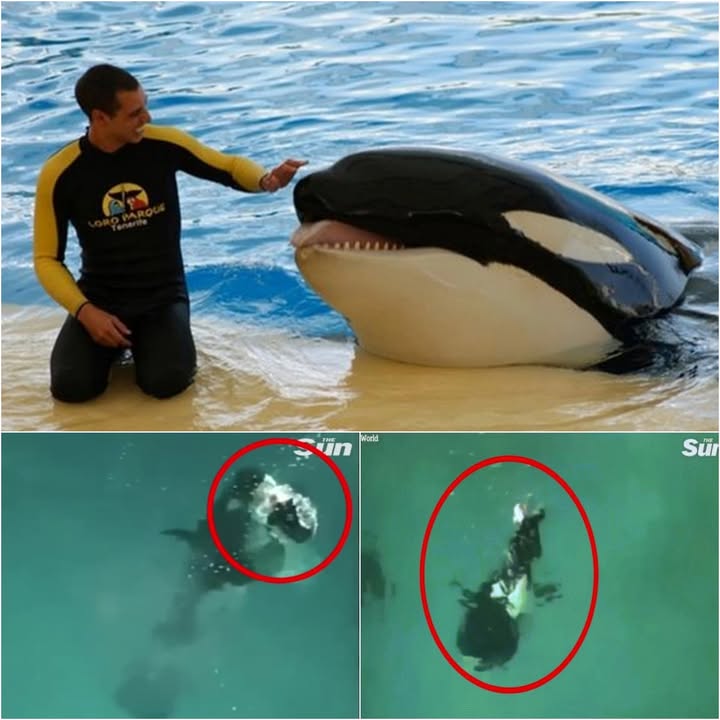In the world of marine shows, few incidents have been as shocking and heartbreaking as the fatal attacks by captive killer whales on their trainers. These tragedies, including the deaths of Alexis Martínez in 2009 in Spain and Dawn Brancheau in 2010 at SeaWorld Florida, have left a lasting impact and raised serious questions about the ethics and safety of keeping orcas in captivity.
Orcas, also known as killer whales, are beloved for their power, beauty, and intelligence. They have been the stars of marine parks worldwide, performing incredible jumps and routines. But beneath their charismatic surface, captivity has proven harmful. Orcas like Keto and Tilikum, born and raised in tanks far from the ocean, have exhibited aggressive behavior that ended in tragedy.
On Christmas Eve 2009, experienced trainer Alexis Martínez suffered a fatal attack at Loro Parque, Spain, by Keto — a 14-year-old captive orca who had never swum in the wild ocean. Keto, usually cooperative, suddenly dragged Martínez underwater during a show and struck him with fatal force, causing severe injuries. Despite rescue efforts, Martínez did not survive.
Only weeks later, on February 24, 2010, SeaWorld Orlando was shaken when senior trainer Dawn Brancheau was killed during a performance by Tilikum, one of the largest orcas in captivity. Brancheau, known for her close bond with Tilikum and expertise in animal behavior, was drowned and severely injured in front of horrified guests. Tilikum was removed from shows and died years later after decades in confinement.
These orcas spent their lives confined to small tanks, unable to express natural behaviors or roam vast oceans. In the wild, orcas live in tight family groups, travel great distances, and enjoy long lifespans, sometimes living up to 90 years. But in captivity, their lives are shortened, and stress from isolation and confinement may contribute to unpredictable and aggressive actions.
The documentary Blackfish brought widespread attention to these issues, criticizing SeaWorld’s treatment of orcas and fueling calls to end captivity-focused entertainment.
While the exact reasons behind the attacks are unknown, experts believe the unnatural captivity environment severely affects orcas’ mental health. The deaths of Martínez and Brancheau exposed the dangers that trainers face, even when well-trained and dedicated.
These incidents led to major changes. SeaWorld ended its orca breeding program in 2016 and announced plans to phase out theatrical orca shows, though they still care for whales on-site. Loro Parque continues housing orcas but faces ongoing criticism from animal welfare advocates demanding their release.
The tragic losses and circumstances remind us that orcas, despite their beauty and intelligence, remain wild creatures. The cost of entertainment should never come at the expense of animal welfare and human safety, and these stories force us to reconsider the future of orca captivity worldwide.


